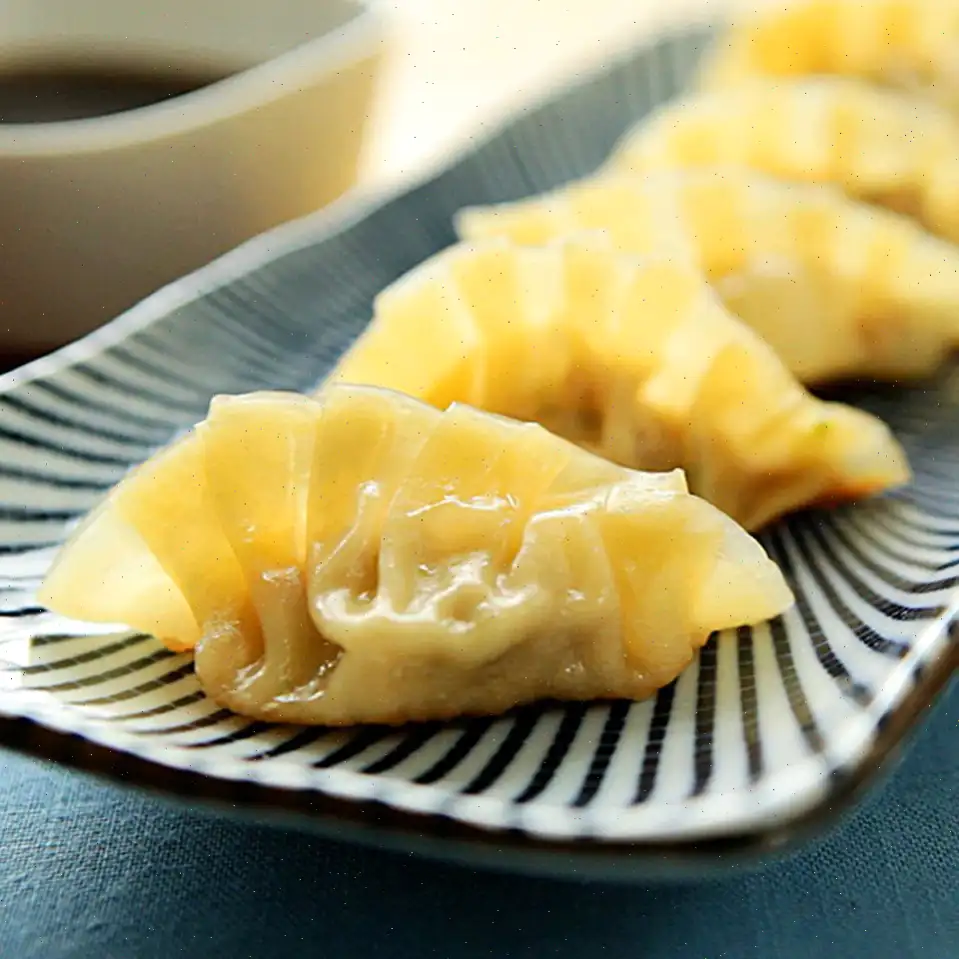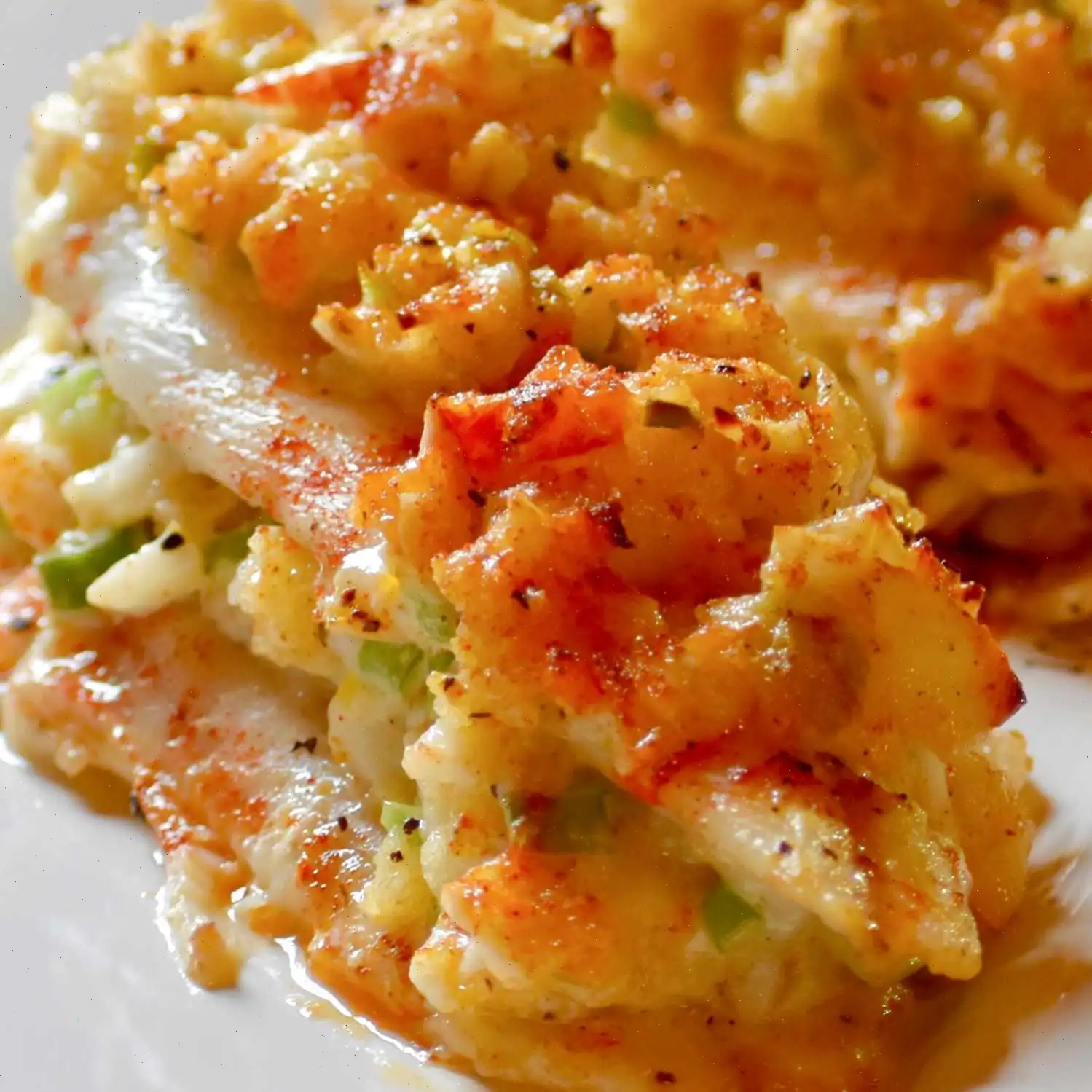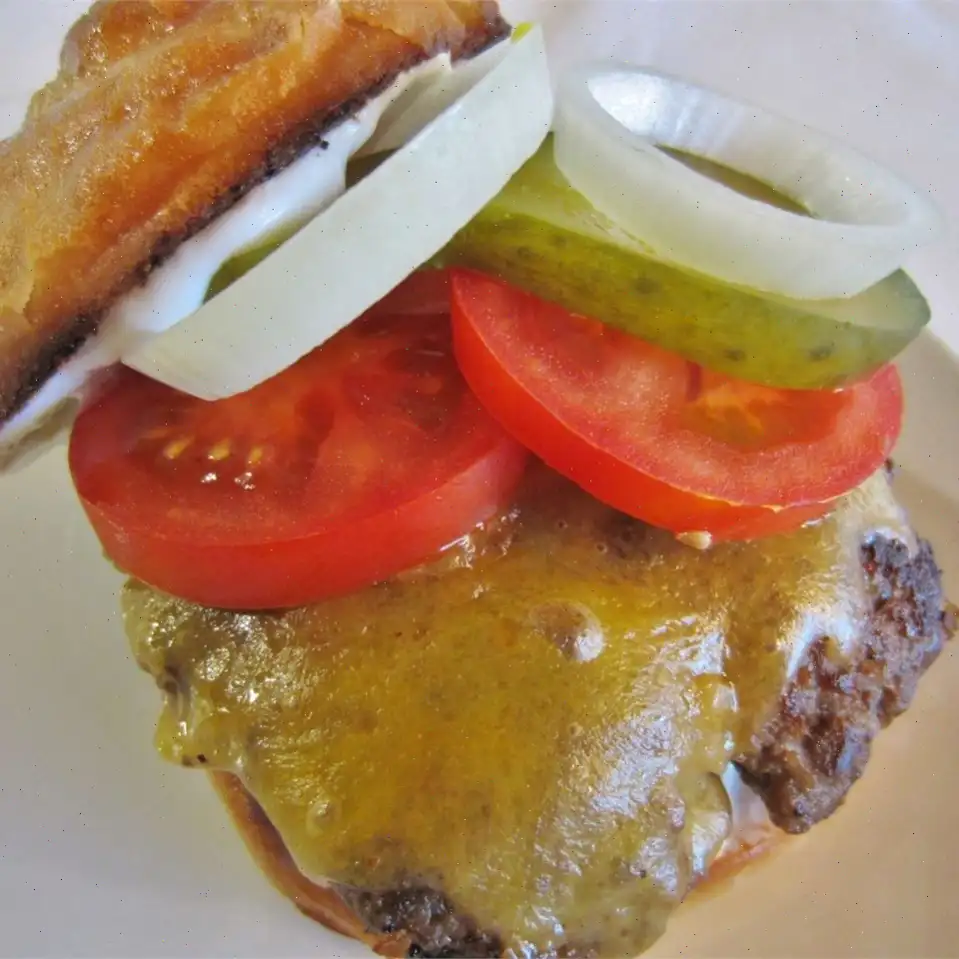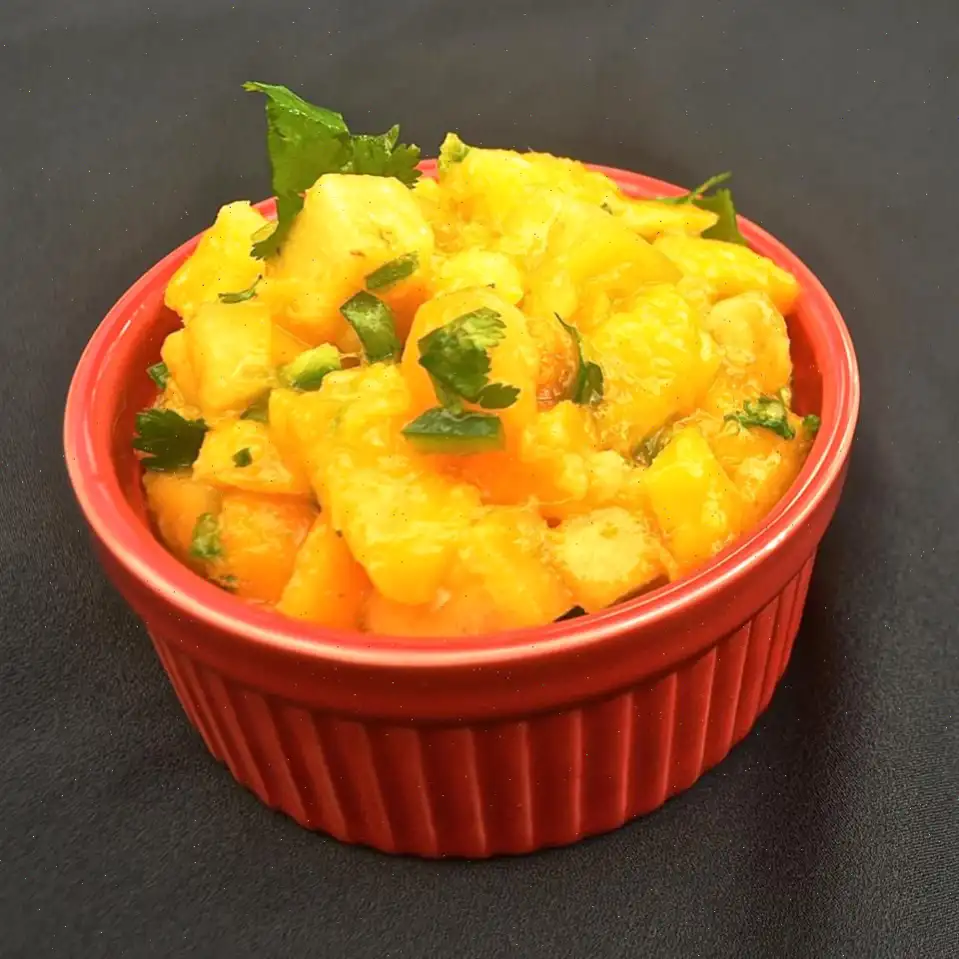
Pork Gyoza Recipe
Ingredients
- 12 ounces ground pork
- head cabbage, shredded
- 1 egg
- 2 spring onions, sliced
- 1 tablespoon soy sauce
- 2 teaspoons sake
- 2 teaspoons mirin
- 2 teaspoons minced fresh ginger root
- 40 gyoza wrappers, or as needed
- 2 tablespoons vegetable oil
- cup water
Sauce:
- cup rice wine vinegar
- cup soy sauce
Directions
- In a large bowl, combine the ground pork, shredded cabbage, egg, sliced spring onions, soy sauce, sake, mirin, and minced ginger. Mix well until all ingredients are thoroughly incorporated.
- Place approximately 1 to 2 teaspoons of the pork mixture in the center of each gyoza wrapper. Moisten the edges of the wrapper with a little water using your fingers.
- Fold the wrapper in half over the filling, forming a semi-circle. Pinch and crimp the edges of the wrapper to create pleats, sealing the dumpling tightly while removing any excess air inside.
- Repeat the process until all the filling has been used, ensuring each gyoza is sealed properly.
- Heat the vegetable oil in a large skillet over medium-high heat. Place the gyoza in the skillet, making sure they are in a single layer. Fry the gyoza until the bottom is golden brown, about 3 to 5 minutes.
- Carefully add the water to the skillet and reduce the heat. Cover the skillet and let the gyoza steam until the water has evaporated, about 5 minutes. Repeat this step with the remaining gyoza.
- For the dipping sauce, mix the rice wine vinegar and soy sauce in a small bowl.
- Serve the gyoza with the dipping sauce on the side and enjoy!
Nutrition Facts (per serving)
- Calories: 349
- Total Fat: 14g (18% DV)
- Saturated Fat: 4g (21% DV)
- Cholesterol: 69mg (23% DV)
- Sodium: 1106mg (48% DV)
- Total Carbohydrate: 36g (13% DV)
- Dietary Fiber: 2g (9% DV)
- Total Sugars: 3g
- Protein: 18g (36% DV)
- Vitamin C: 19mg (21% DV)
- Calcium: 64mg (5% DV)
- Iron: 3mg (17% DV)
- Potassium: 324mg (7% DV)
Gyoza are a popular type of Japanese dumpling filled with savory ingredients like ground pork, cabbage, and ginger. These delicate dumplings are often pan-fried for a crispy texture on the outside while remaining juicy and tender on the inside. While gyoza are commonly associated with Japanese cuisine, they have a rich history that stretches back across East Asia. In this article, we'll explore the history, regional variations, and interesting facts about gyoza, as well as how it differs from other similar dumplings.
History and Origins of Gyoza
The story of gyoza begins in China, where dumplings have been a staple food for centuries. Known in Chinese as jiaozi, these dumplings are believed to have been invented by Zhang Zhongjing, a famous physician from the Eastern Han Dynasty. Originally intended as a medicinal dish, jiaozi were filled with a combination of ground meat and herbs, which were believed to have healing properties.
It was not until the early 20th century that gyoza made their way to Japan. Japanese soldiers who had been stationed in China during the Second Sino-Japanese War (19371945) brought back the recipe. Over time, the Japanese version of jiaozi evolved, incorporating local ingredients such as cabbage, garlic, and ginger, which gave gyoza their distinctive flavor. Today, gyoza is considered a beloved snack or appetizer in Japan.
Regional Differences in Gyoza
While gyoza originated in China, regional variations have developed in Japan, with distinct differences in cooking techniques and ingredients. The two most common types of gyoza in Japan are pan-fried gyoza (known as yaki-gyoza) and steamed gyoza (known as mushi-gyoza). The pan-fried version, which is crispy on the bottom, is the most popular, while steamed gyoza is often found in restaurants serving more traditional or home-style dishes.
Additionally, the filling ingredients can vary depending on the region. In northern Japan, for example, gyoza is often filled with a combination of ground pork, garlic, and chives. In contrast, southern regions may incorporate more vegetables into the filling, such as cabbage, mushrooms, and bamboo shoots. These regional adaptations reflect the local taste preferences and available ingredients.
How Gyoza Differs from Similar Dishes
At first glance, gyoza may seem similar to other dumplings, such as Chinese jiaozi or Korean mandu. However, there are a few key differences that set gyoza apart.
- Size and Texture: Gyoza tend to be smaller and thinner than their Chinese counterparts, with a more delicate dough. The filling in gyoza is also finely minced and often includes a higher proportion of cabbage and garlic compared to jiaozi.
- Cooking Technique: Gyoza are typically pan-fried, which gives them a crispy bottom and a steamed top. In contrast, jiaozi are often boiled or steamed, which results in a different texture.
- Flavor Profile: Gyoza usually feature a balance of savory, slightly sweet flavors, with the addition of ingredients like soy sauce, mirin, and sake. On the other hand, Chinese jiaozi can vary in flavor, often incorporating spices like star anise or five-spice powder.
Where Gyoza is Usually Served
Gyoza can be found in a variety of settings, from casual family dinners to upscale Japanese restaurants. In Japan, gyoza is commonly served as an appetizer or side dish, often accompanying a bowl of ramen or other noodle dishes. Its also popular at izakayas (Japanese pubs), where its served alongside drinks like beer or sake. Gyoza is a popular dish at festivals, where vendors sell freshly made dumplings to hungry crowds. In fact, the city of Utsunomiya in Japan is famous for its gyoza and hosts an annual Gyoza Festival, celebrating the beloved dumpling.
Fun Facts About Gyoza
- Gyoza Eating Competitions: In Japan, gyoza-eating contests are held where participants compete to see who can eat the most gyoza in a set period of time. The world record for gyoza consumption stands at an impressive 211 gyoza in just 10 minutes!
- National Gyoza Day: Every year on December 29th, Japan celebrates National Gyoza Day. This tradition started in 1992, when the Japan Gyoza Association designated the day to promote gyoza as a national dish.
- Perfecting the Pleats: The process of folding gyoza to create the signature pleats is considered an art form. The number of pleats can vary, but most gyoza are folded with 67 pleats to ensure a tight seal that prevents the filling from spilling out during cooking.
FAQ about Pork Gyoza Recipe
Comments
Aaron Diaz
03/20/2025 12:04:38 PM
My husband and I absolutely adore this recipe! If pork isn't your thing, ground beef is also a fantastic alternative that works just as well!








